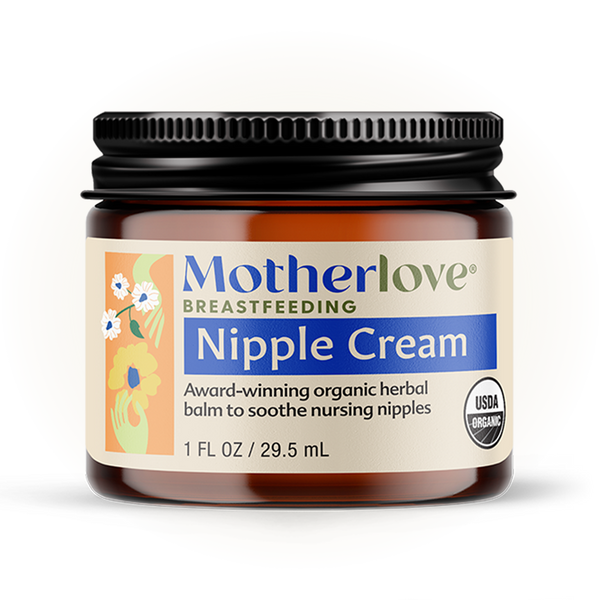Written by Wendy, IBCLC
Most of us have heard that breastfeeding is a great way to bond with babies. It’s often one of the first things people mention when they talk about the benefits of breastfeeding. But what if breastfeeding doesn’t work out for you for whatever reason, or you’ve decided that breastfeeding isn’t something you want to do?
Mom guilt is real—and guilt over not breastfeeding tops the list. Many moms who don’t breastfeed—or breastfeed for a few weeks—often worry that they won’t be able to properly bond with their babies.
I’m here to tell you that this isn’t true! While breastfeeding is a great way to bond with your baby, it’s not the only way, and it’s not the “better” way. You can absolutely bond with your baby without breastfeeding them.
Breastfeeding creates a helpful blueprint for bonding, because the act of breastfeeding itself often sets you up for bonding success. But the same principles can be applied to non-breastfeeding moms and babies.
HERE'S HOW BREASTFEEDING CAN FACILITATE BONDING:
- Breastfeeding releases oxytocin in moms, which is a hormone that enhances feelings of love and closeness.
- Breastfeeding requires close contact between mothers and babies, and usually a considerable amount of skin-to-skin contact, both of which can enhance bonding.
- Breastfeeding encourages eye contact between moms and babies.
- Breastfeeding mother’s bodies often respond to baby’s cries and fussiness by becoming full with breast milk or leaking milk.
- Breastfeeding encourages responsive feeding—you read your baby’s cues (not how many ounces they’ve drunk) to understand when they are done with feeding or when it’s time to switch breasts during a feed.
BONDING WITH BOTTLE-FED BABIES
Again, it’s a myth that not breastfeeding robs you of the ability to bond with your baby. In fact, mothers of bottle-fed babies can absolutely have close, intimate, and cuddly bonds with their babies.
SKIN-TO-SKIN CONTACT
Breastfeeding isn’t the only way that you get your oxytocin fix! Sharing skin-to-skin time with your baby also releases oxytocin—in both moms and babies. So strip your baby down to their diaper and let them nap on your bare chest (dads, partners, and other caregivers can do this too!) and feed your baby while holding them skin-to-skin.Practice
RESPONSIVE FEEDING
You don’t have to breastfeed to feed your baby responsively. The Academy of American Pediatrics (AAP) recommends practicing responsive feeding, whether you are breastfeeding or bottle-feeding. This means waiting until your baby shows signs of hunger (rooting, making sucking motions with the mouth, sucking on fingers) to feed. This also means stopping feeds when your baby becomes less interested or shows signs of satiation (turning away, unclenching fists, falling asleep).
ENGAGE WITH YOUR BABY WHILE FEEDING
Don’t just put the bottle in your baby’s mouth and then stare into your phone for the next 15 minutes (though, let’s be honest, some of us need breaks like this sometimes, and that’s okay too!). When possible, engage with your baby while feeding them. That means looking into their eyes, talking to them, and reading their body language for signs of fullness.
FIND OTHER OPPORTUNITIES TO BOND
Bonding doesn’t just happen during feeding. Other wonderful ways to bond with babies include wearing your baby in a carrier and going on a walk with them, talking to your baby, singing to them, and reading to them.
DON'T BE AFRAID TO 'SPOIL' YOUR BABY
You can’t actually “spoil” a tiny baby—really. Attending to your baby when they fuss or cry teaches them to love and trust other humans. You don’t need to toughen your baby up at this age; that’s a myth. Attending to your baby’s needs in this way can absolutely happen, whether your breastfeed or not.
WHAT TO DO IF YOU ARE HAVING TROUBLE BONDING
Whether you are breastfeeding or bottle-feeding, sometimes bonding doesn’t come easily. First, it’s normal if you don’t fall in love with your baby right away. Remember, you and your baby are getting to know one another. Give yourself some grace and the gift of time here. But also, some moms have difficulty bonding because of factors beyond their control. Here are some factors to consider:
YOU MIGHT HAVE A POSTPARTUM MOOD DISORDER
Postpartum mood disorders—which is when you experience persistent anxiety or depression for more than two weeks after your baby is born—are common causes. Postpartum mood disorders are treatable with therapy and/or medication. You deserve to feel better.
YOU MAY NEED SUPPORT WITH DAY-TO-DAY TASKS
Mothers who aren’t supported during their postpartum period often have more trouble bonding with their babies. If you can secure some support with things like household maintenance, meal prep, and some of the tasks of baby care, you will likely feel more able to bond with your baby. This might mean reaching out for help from your partner or family members. It may also mean being willing to accept the help that is offered to you (so many of us have trouble with this!). You can’t do this alone, and you shouldn’t be made to.
THE BOTTOM LINE
Above all else, if you are struggling with bonding, don’t hesitate to reach out for professional help. So many mothers struggle with bonding after they have babies, and there is support for you. The same goes for breastfeeding guilt, if that’s something you are experiencing. A therapist who specializes in postpartum issues can be a lifeline here. You might also consider joining an online or in-person support group for postpartum moms.






